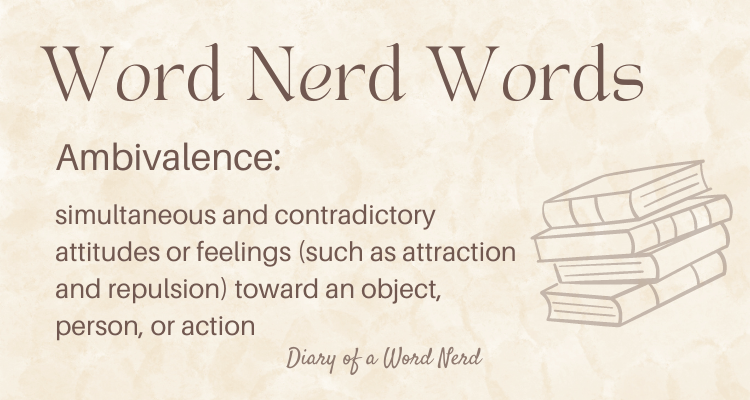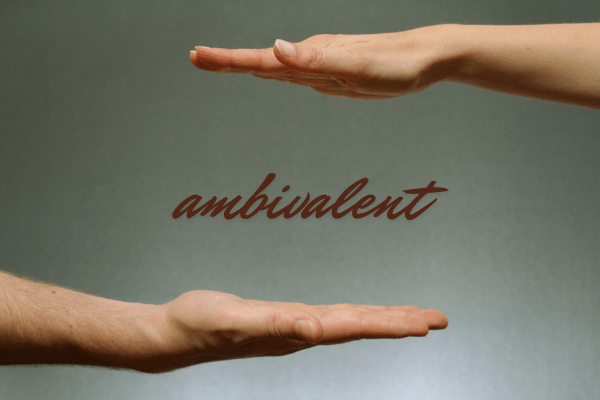I’m now old enough for my children to teach me things. But, who are we kidding? A wise person is open to the wisdom of children her entire life! Anyway, recently, one of my sons, who is going through leadership training and is big on introspection, schooled me on the meaning of ambivalence.
When he asked me what it meant, I said being wishy-washy, or non-committal. “That’s what I thought too!” he exclaimed. But neither of us were right. A Word Nerd needs to pay attention to the prefix- ambi .
ambivalence: borrowed from German Ambivalenz, from ambi- + -valenz.
Think about words like ambidextrous, which means able to use BOTH hands skillfully. Ambi comes from Latin roots, ambō, ambae which mean “two of a pair, both.” It was introduced into English around the turn of the 20th century in the the field of psychology.
Ambivalence has a few meanings:
- simultaneous and contradictory attitudes or feelings (such as attraction and repulsion) toward an object, person, or action
- continual fluctuation (as between one thing and its opposite); uncertainty as to which approach to follow (perhaps this is where my incorrect assumption of “noncommittal” comes from.)
According to Merriam Webster:
The prefix ambi- means “both,” and the -valent and -valence parts ultimately derive from the Latin verb valēre, meaning “to be strong, be effective, have worth.” Not surprisingly, an ambivalent person is someone who has strong feelings on more than one side of a question or issue.
“Ambivalent.” Merriam-Webster.com Dictionary, Merriam-Webster, https://www.merriam-webster.com/dictionary/ambivalent. Accessed 13 Sep. 2024.
Now you know. Seems a good word to ponder in this environment of political debate and a time when everyone needs to do a better job of holding more than one idea or feeling at a time! Take “ambivalence” into your weekend and impress someone with your Word Nerd knowledge.
Thanks for getting nerdy with me!





Cool, thank you! I was doing some research on this as I think I experienced nostalgic ambivalence today…
Wow, I thought it meant non-commital too! To practice using it in a sentence, I do NOT have ambivalent feelings about the Oxford comma, but I do have ambivalent feelings about what restaurant to go to tonight. 🙂